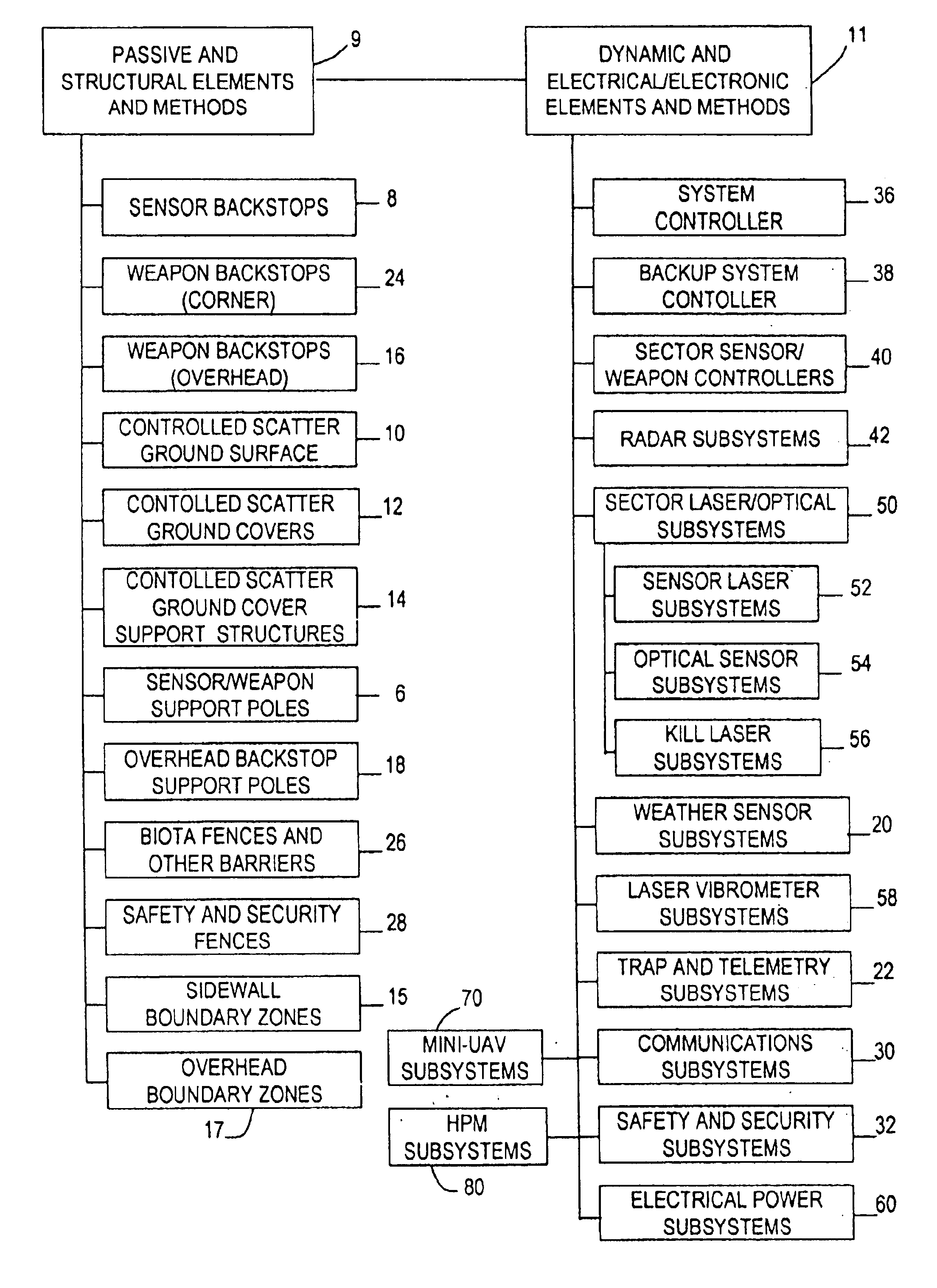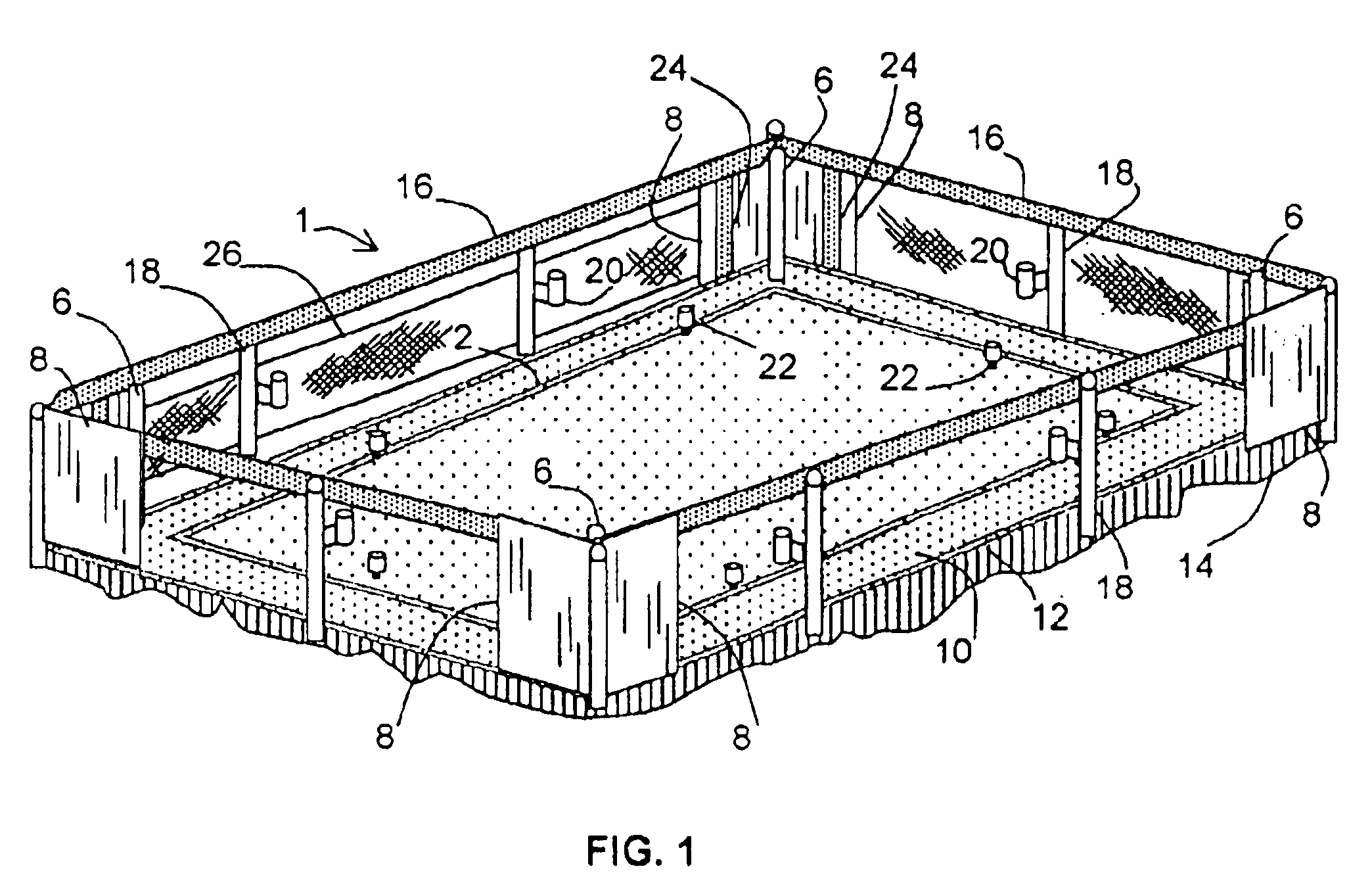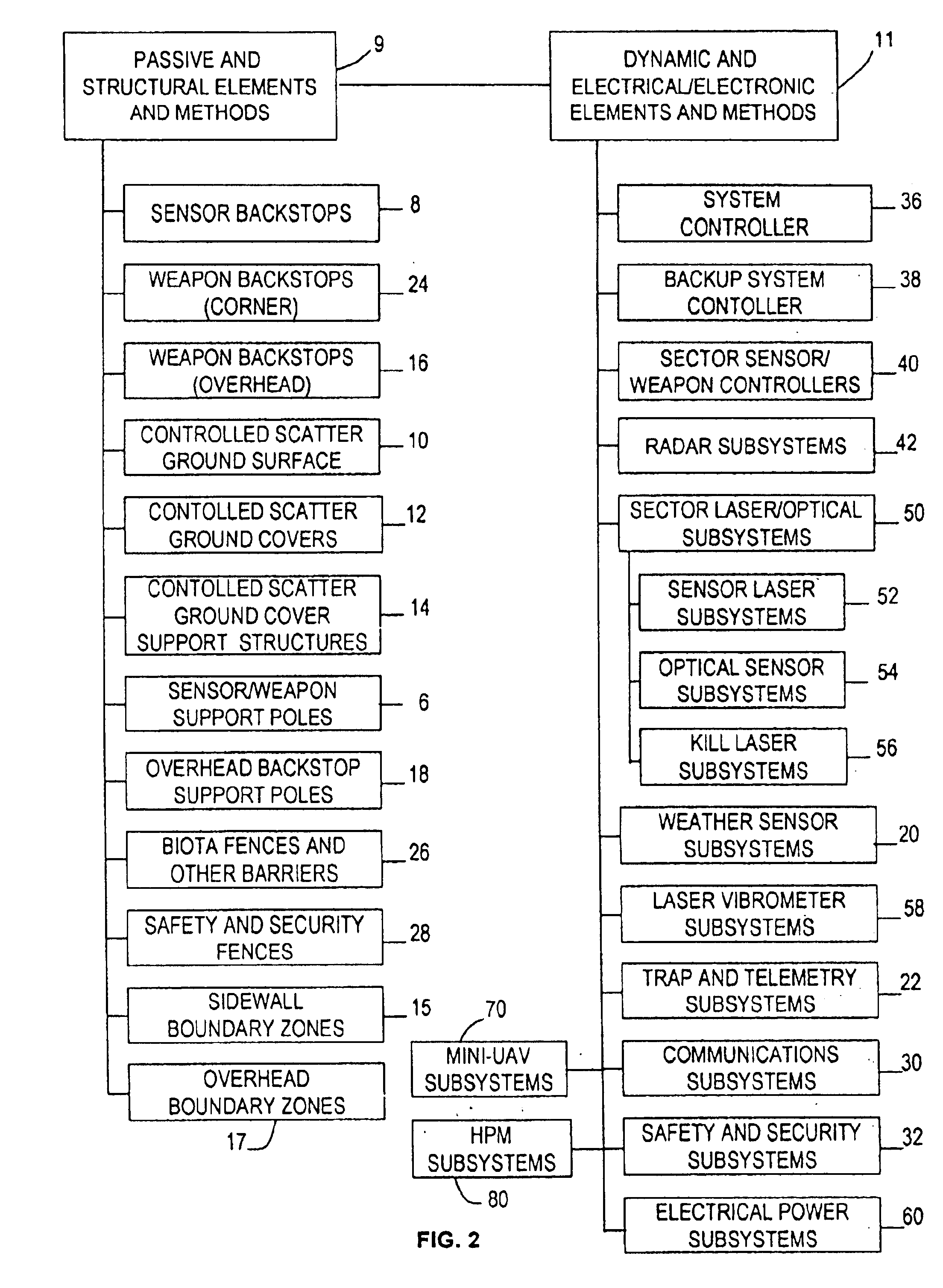At present, economic losses in crops and animal products caused by insects and other destructive airborne biota undoubtedly exceed $10 billion annually in the United States alone.
It is reported that combined costs of insect damage and control measures exceeded $1.4 billion in cotton production alone in 1997.
Insects and other arthropods and biota (e.g., fungal spores,
bacteria, viruses) cause direct damage to food,
fiber, and animal products and plants.
Additionally, mosquitoes, flies, and the like also transmit diseases which adversely affect humans and other animals and plants.
Costs further associated with insect pests and other harmful biota include costs associated with insect scouting and control measures.
Control measures frequently employ pesticides or the like which also kill
beneficial insects, leave residues in food and
fiber products, and cause environmental and ecological damage from runoff.
Envionmental and ecological damage can also be caused from waste products resulting from chemical
pesticide production processes.
In food product production animals, it is often necessary to inject
antibiotics and other chemicals in order to control pests (e.g., screw worms, hookworms) which have invaded a body of an animal, and such chemicals may cause undesirable side effects or leave residues in products derived from animals.
In many cases, pests are developing tolerance to common pesticides and
antibiotics, requiring development of more potent and more selective pesticides and
antibiotics which in turn become more expensive.
Long term effects of residues and byproducts in human diets, and in the global environment, resulting from use of pesticides, antibiotics, and
genetic engineering techniques, and loss of
genetic diversity in
genetically engineered crops (due to the expense in developing multiple transgenic varieties), are matters of considerable concern and debate.
Biological controls employing parasites or
disease organisms specific to certain insect pests are currently used in some areas, but use of biological controls suffers in many cases from the lack of timely information on populations, behavior, and movement of targeted pests.
Other insect pests may fly randomly about an
animal production environment, such as a
feedlot operation, seeking to lay their eggs, or suck blood, causing pain and stress to animals, reducing productivity, and frequently spreading diseases or other parasites.
Some, especially moths, may migrate over extremely long distances (hundreds of kilometers), aided by atmospheric winds, to later land in crops and other areas and lay eggs or otherwise cause damage.
However, they do not describe an overall
system concept within which such a
telemetry-equipped trap might be used in a
field crop or
animal production environment, nor do they describe specifics of a
telemetry device which might make such an application economically feasible.
Although laser vibrometer instruments have been used by researchers in laboratories to study
insect behavior and communications,
laser vibrometry has apparently not been previously considered for
adaptation for use in monitoring crops for evidence of insect activity, or for other potential applications in monitoring
crop health and status, as proposed by Applicants.
Such methods may be relatively effective indoors but are generally less effective, or costly to implement and maintain, in large
field crop environments.
Some have proposed use of lasers and other directed energy devices to kill insects, but have not described how such technologies could be employed safely in a
field crop or
animal production environment, or how lasers could be used without killing or injuring significant numbers of beneficial or neutral insects as well as pests.
In fact, the growing tips and fruit setting blossoms of plants are quite sensitive and would probably be damaged by a laser used as proposed by Johnson, or by high power
microwave energy used in a similar way.
Further, indiscriminate use of
laser beams to attract and kill or incapacitate insects, as proposed by Johnson, would likely result in injury to eyes or other organs of
beneficial insects, birds, and bats as well as people and other animals.
As noted earlier, another key limitation in use of
radar for insect detection and monitoring applications is that, when insects descend to too low a level (e.g., less than ten to twenty feet above a
ground level or
crop canopy), or originate or maintain flight at a low level above the ground or
vegetation (e.g. grass, crop
canopy), as when flying into a crop from weeds or other plants in the vicinity of the crop), insects generally can not be detected by conventional radar since the amplitude of “
clutter returns,” resulting from inevitable sidelobes of a radar antenna pattern illuminating the ground and
vegetation in the same range cells as insect targets, will generally exceed amplitude of the return from an insect, so that insect
signal-to-
noise-plus-
clutter ratio is below detectable limits.
Since some
clutter returns generally occur from the same ranges as targets, use of range gating in the radar cannot eliminate the clutter.
Even when more sophisticated radars employing Doppler measurement capabilities and advanced
signal processing are employed,
Doppler spread resulting from motion of
vegetation due to wind, heliotropic tracking, and growth will frequently interfere with detecting Doppler shifted or
Doppler spread return from an airborne insect.
However, the top of the crop
canopy is not a well-defined plane, but includes multiple growing
plant tips standing with random height variations of 0.5 meters or more, and with significant room between the
plant tips.
Consequently, pests generally spend little if any time in flights higher that the growing tips of the plants, and there is little opportunity to detect and contact such pests once they have “settled into” a crop.
Consequently, a laser beam simply scanned above the top of the crop is more likely to contact and injure beneficial insects than insect pests.
As noted earlier, Johnson did not disclose a need or a method for distinguishing insect pests from beneficial insects and neutrals.
Even if a laser alone is used to perform initial detection of an insect, information from individual “hits” on the insect as the laser scanned the field would not be sufficient to collect observational data needed to support classification of a “target” as pest or non-pest.
Consequently, simply using a laser beam alone to scan a field and contact and injure insects, as suggested by Johnson, would have limited effectiveness in detecting insect pests “working” the crop, and would probably be more likely to injure beneficial insects than pests.
As described above, radar and ladar sensor technologies separately have some capabilities for detecting insects in flight above a crop, but also have significant limitations when employed separately to detect insect pests present within crops.
When radar is deployed in a
crop field environment as described in the literature, it has significant difficulty in simply detecting insects in or just above a crop, much less obtaining measurement data needed to support classification.
Johnson did not disclose any capability for classification of insects, nor for providing for safe use of lasers in a field crop environment (other than suggesting that they be used only in remote locations).
 Login to View More
Login to View More  Login to View More
Login to View More 


